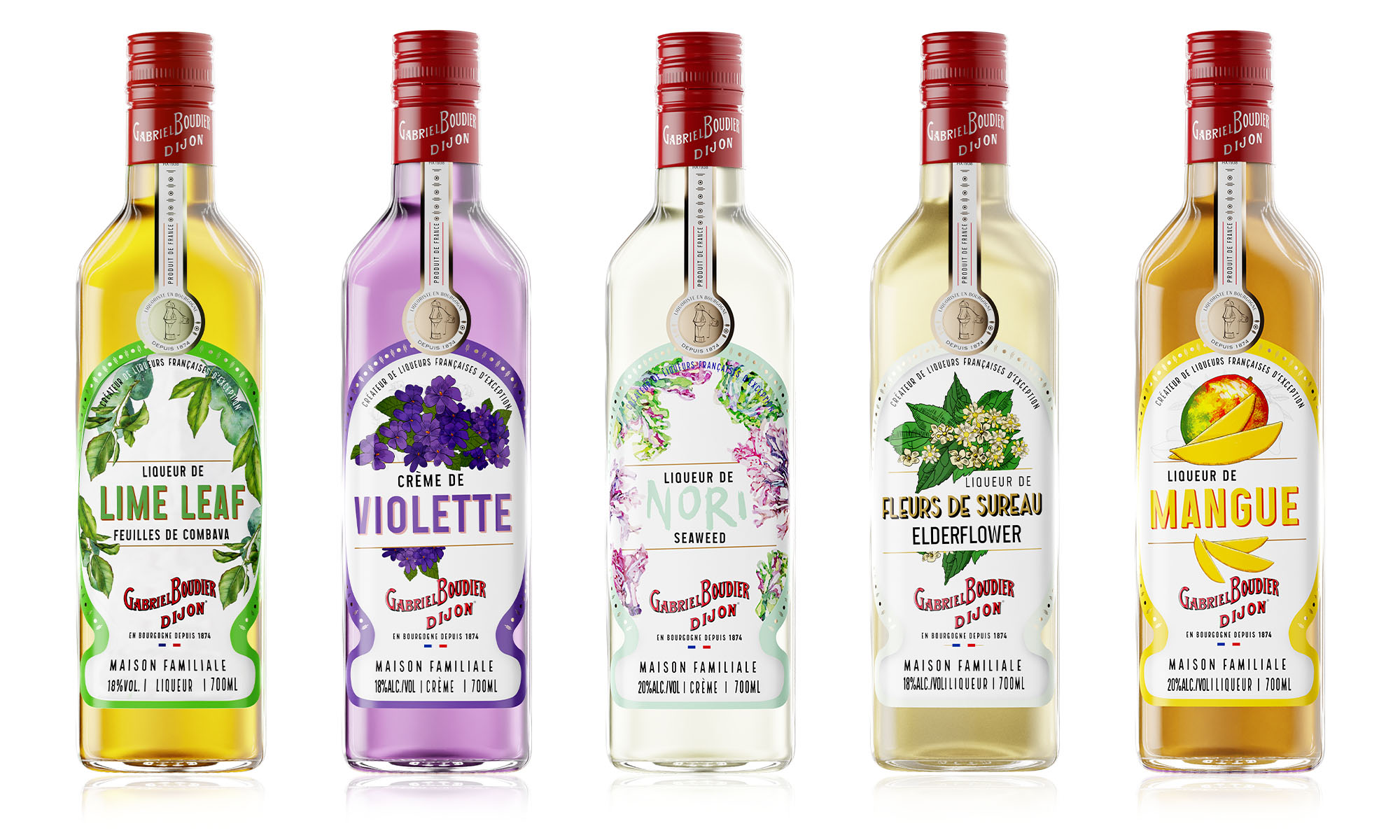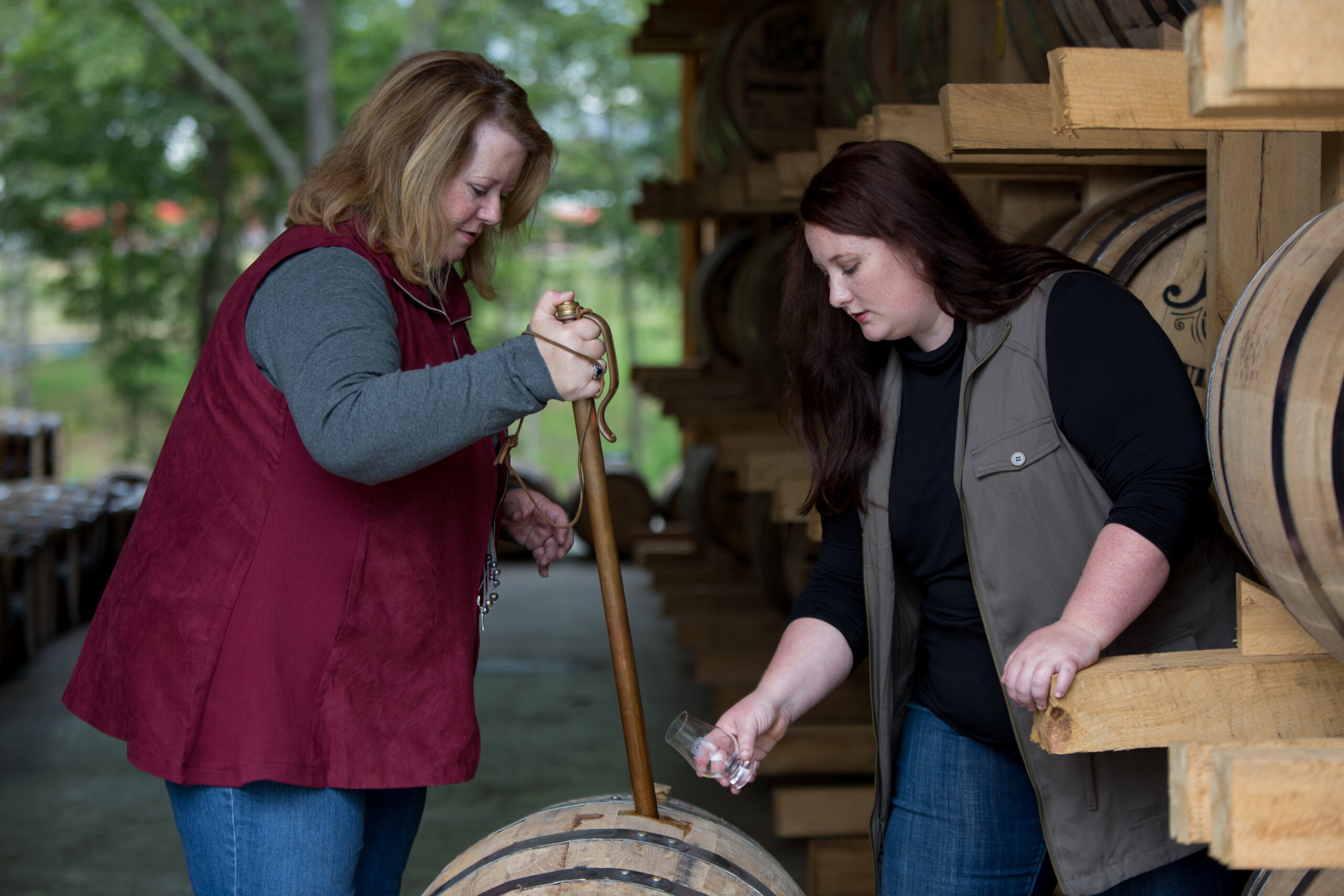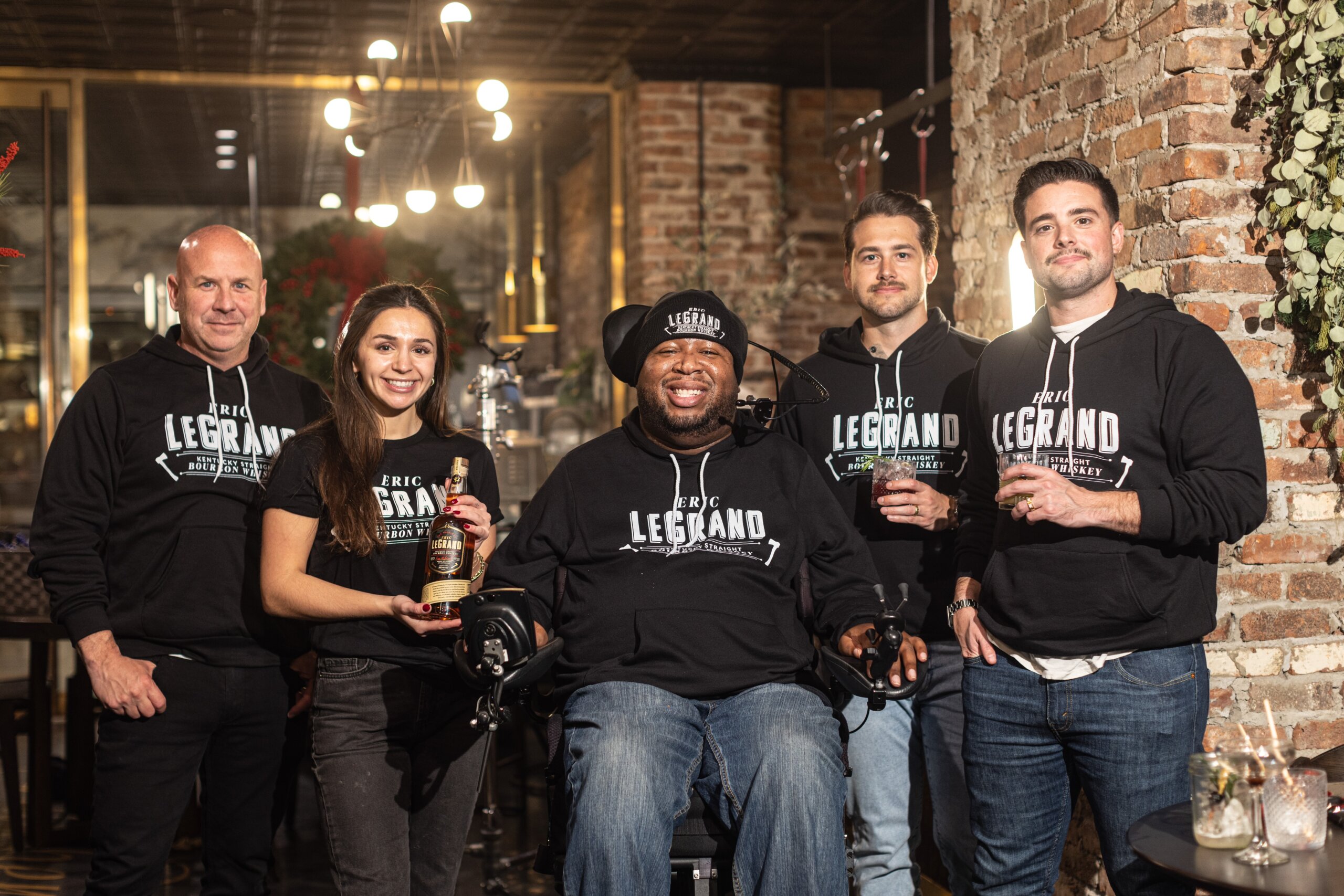National Absinthe Day: Celebrating the Mystique of the Green Fairy
By Absinthia Vermut
Hi, I am Absinthia, Founder & CEO of award-winning Absinthia’s Bottled Spirits. I heard from a few people wanting to know how to drink absinthe, a few wanting to understand it better, and a few friends in the Absinthe community (yes, there is an Absinthe community!) that wanted to make sure I shared some important facts about Absinthe. Let’s address some common questions regarding the consumption of Absinthe. When I was starting out with my brand on social media, I stirred a bit of controversy when I posted that I like Absinthe with a large ice cube, swirled in the glass until the Absinthe louched (became cloudy). I received a message offline that I was being talked about, because that is not the way it is done. Maybe, but it is how I like it! So, you won’t hear Absinthia telling you that the way you like to prepare Absinthe is wrong. As long as you don’t light it on fire. That was a marketing gimmick in the 1990s. Well crafted Absinthe shouldn’t need sugar to taste good. Absinthe is formally a Digestif, defined by Wikipedia as an alcoholic beverage served after a meal, traditionally believed to aid digestion even though there is not strong evidence to support this. The herbs included in the distillation of Absinthe include sweet fennel seeds. Fennel has been shown to help with digestion by reducing inflammation in the bowels and decreasing bacteria that cause gassiness. It also helps freshen the breath, and who doesn’t appreciate guests with fresh breath after a meal? Anise has some digestive health benefits as well. As for mixing Absinthe, that is where the fun happens! The possibilities for mixing Absinthe in cocktails are endless. I have been collecting Absinthe cocktail recipes for nearly 15 years! I have hundreds of them, all sorted by base alcohol, on my website. My favorite recipe right now is Death at Midnight, a play on Hemingway’s Death in the Afternoon, with Absinthe and sparkling wine. I love using the new Absinthia Absinthe Bleue, an Absinthe infused with butterfly pea flower, as the combination creates a gorgeous purple blush. Where you can get Absinthe depends on location, which is dependent on distributors. While I am eagerly working towards the day my Absinthe is available worldwide, I can ship through my website to about 47 states. I have distribution in Louisiana, New York, Florida, Idaho, New Jersey, Pennsylvania, and California, which means you can find Absinthia Absinthe in bars and liquor stores in those states. Want to know the best way to support a small brand? Ask your favorite bartender and liquor store owners to carry the products you like! In celebration of National Absinthe Day, I invite you to explore the allure of this iconic spirit, raising a glass to the Green Fairy and the centuries-old tradition it embodies. Cheers to your journey of discovery and appreciation for Absinthe, a libation as rich in history as it is in flavor. More questions answered about Absinthe after the photos… Absinthe garnered a notorious reputation, but it was simply a victim of its own success. No other spirit with wormwood, such as vermouth and amaro, was made illegal, so why was Absinthe? French soldiers returned home with a fondness for Absinthe because French army doctors prescribed it in the 1840s Algerian Campaign to prevent fevers, malaria, and dysentery, caused by the extreme North African environment. Then, in the 1860s a disease called Phylloxera wiped out most of the grape vines in France. Absinthe grew in popularity until the time of day when the French would meet at cafes to end their day with a glass of wine became called L’heure Verte, the Green Hour, where wine was replaced by Absinthe. When the grapes grew back healthy and wine returned, they found their previous customers were simply not interested. Absinthe had a cool ritual, it tasted amazing, and it was a lot cheaper than wine. Proper dilution brings Absinthe down to the same strength as the wine they were used to drinking during the Belle Epoque. Since it was similar in strength, it fit right in as a great replacement for wine. Cue the anti-Absinthe propaganda, which included calling alcoholism absinthism and sending drunks to insane asylums. When they dried out and returned home, they were told to drink wine because it was healthy. Absinthe is legal again because it has been proven safe to drink by modern science. Turns out that the toxic thujone, an oil found in wormwood that can be toxic to humans, is absent after distilling. This is why there is no difference between EU & US Absinthe, respectively 35 ppm and 10 ppm, an argument often used to promote European Absinthe over American Absinthe. Truth is, true Absinthe is essentially the same regardless of where it is made. We use the same amount of wormwood as pre-ban Absinthe, and there is no thujone in properly crafted Absinthe. Brian Robinson of the Wormwood Society wanted to make sure that I “talk about the thujone myth and how it only became of interest in the 1990s when marketers used the propaganda of the late 1800s to create a surefire way to separate gullible consumers from their money by marketing thujone levels. And that even some of the brands that claim the highest levels of thujone don’t contain ANY thujone when chemically analyzed.” Absinthe is a lot like gin, a distilled spirit with botanicals. The botanicals in Absinthe are aniseed (Pimpinella anisum, not star anise), sweet fennel seed (oeniculum vulgare), and grande wormwood (artemesia absinthium), plus coloring herbs such as melissa and artemisia pontica. This brings up another question, “What makes one Absinthe higher quality than another?” To be a true Absinthe, it must contain those three herbs, the “holy trinity”. It must be distilled. It must not contain sugar or artificial colors (some of the most found Absinthes in the market do! If the green hue looks fake, believe it), and it must not have herbs floating in the bottle. All Absinthia’s Absinthes are made the way Absinthe was made in the late 1700s and 1800s, when it was first created by Marguerite Henriod. We have an episode of our podcast, Green Fairy Tales, dedicated to this remarkable story. We use organic herbs as often as possible and follow traditional distillation methods. Absinthia believes that a well-crafted Absinthe doesn’t need sugar to taste good, allowing the intricate flavors of the botanicals to shine through authentically. For the wealthy and aristocratic classes in Europe, sugar was a symbol of status and luxury. We feel differently about it today. We have two traditional Absinthes, Absinthia Absinthe Verte and Absinthia Absinthe Blanche, both multiple gold medal winners. The Verte is naturally colored with traditional herbs. The Blanche is bottled after distilling, and we love the story behind clear Absinthe, popular during the ban. If you didn’t color your Absinthe green, no one knew what it was! We have two innovative Absinthes, our Absinthia Absinthe Barrel Aged and Absinthia Absinthe Bleue. Because of the delicious Sazerac made with rye whiskey, we rest our verte, pre coloring phase, in ex rye oak barrels for about 4 months. Inspired by Empress Gin, Absinthia knew that if butterfly pea flower worked in gin, it would work in Absinthe. The first naturally colored blue Absinthe, Absinthia Absinthe Bleue has a lovely subtle floral note that works so well with the neutral grape distillate and the holy trinity of herbs, wormwood, anise, and fennel. Try it in a Death at Midnight! For more information visit absinthia.com About Absinthia Vermut Absinthia Vermut is a visionary entrepreneur driven by her profound love for vintage spirits crafted with wormwood. Her journey into the world of absinthe began in 1996, when she savored her first taste of this enigmatic elixir. A few months later, on April Fool’s Day in 1997, she served her friends her first batches of bootleg absinthe, and it was on that whimsical day that she earned the moniker “Absinthia.” In 2013, recognizing the potential of her passion, she took the bold step of legally changing her name to Absinthia and even trademarked it. With unwavering determination, she founded Absinthia’s Bottled Spirits, LLC, marking the inception of her mission to introduce her meticulously crafted organic absinthe to the world. Remarkably, her last name, Vermut, turned out to be German for wormwood. This was a sheer coincidence discovered after years of being known as Absinthia. Absinthia’s first product, the Absinthia Absinthe Blanche Superieure under the brand Absinthia™, made its debut in bars, restaurants, and bottle shops in 2017. This exceptional spirit earned its first prestigious accolades, a gold medal at the San Francisco World Spirits Competition and the New York International Spirits Competition, in 2018, officially elevating Absinthia from a bootlegger to an award-winning absintheure. In 2021, Absinthia expanded her horizons by acquiring Nickel Dime cocktail syrups, a venture in which she had been a founding partner. Today, Absinthia’s Bottled Spirits offers a diverse portfolio of four exquisite absinthes, four delectable cocktail syrups, and two enticing gift packs, with even more innovative products on the horizon. Most recently, Absinthia received well-deserved recognition from the Sunset Magazine Spirit Competition, where she was named Best Woman Distiller. Her creations, including Absinthia Absinthe Verte with an exceptional 97 rating and double gold, as well as the Caged Heat craft mixer with a commendable 92 rating and gold, were also celebrated as the Best Liqueur and Best Non-Alcoholic Mixer, respectively. Her products have won over 20 gold medals. Absinthia’s Bottled Spirits, LLC, takes pride in its WBENC certification, and its status as a 100% woman-owned enterprise. All of its products are meticulously crafted in California, using only the finest quality ingredients available. Beyond her entrepreneurial pursuits, Absinthia holds a Bachelor of Fine Arts degree from NYU and a Master of Business Administration from Babson College. She resides in Berkeley, California, with her daughter, a Berkeley High student, and their cherished two dogs. Absinthia’s journey continues to be a testament to the transformative power of passion and determination in the world of spirits and entrepreneurship.Absinthe has been legal for 17 years now, and when I asked my followers on social media what they wanted to know about Absinthe, I was amazed by the questions.
Is it bad to like drinking Absinthe straight?
What can I mix it with? What can I serve it with? Is it for before or after dinner?
Where can I get it?
Absinthia believes that a well-crafted Absinthe doesn’t need sugar to taste good, allowing the intricate flavors of the botanicals to shine through authentically
Truth is, true Absinthe is essentially the same regardless of where it is made. We use the same amount of wormwood as pre-ban Absinthe, and there is no thujone in properly crafted Absinthe.
I heard Absinthe is not safe.






















